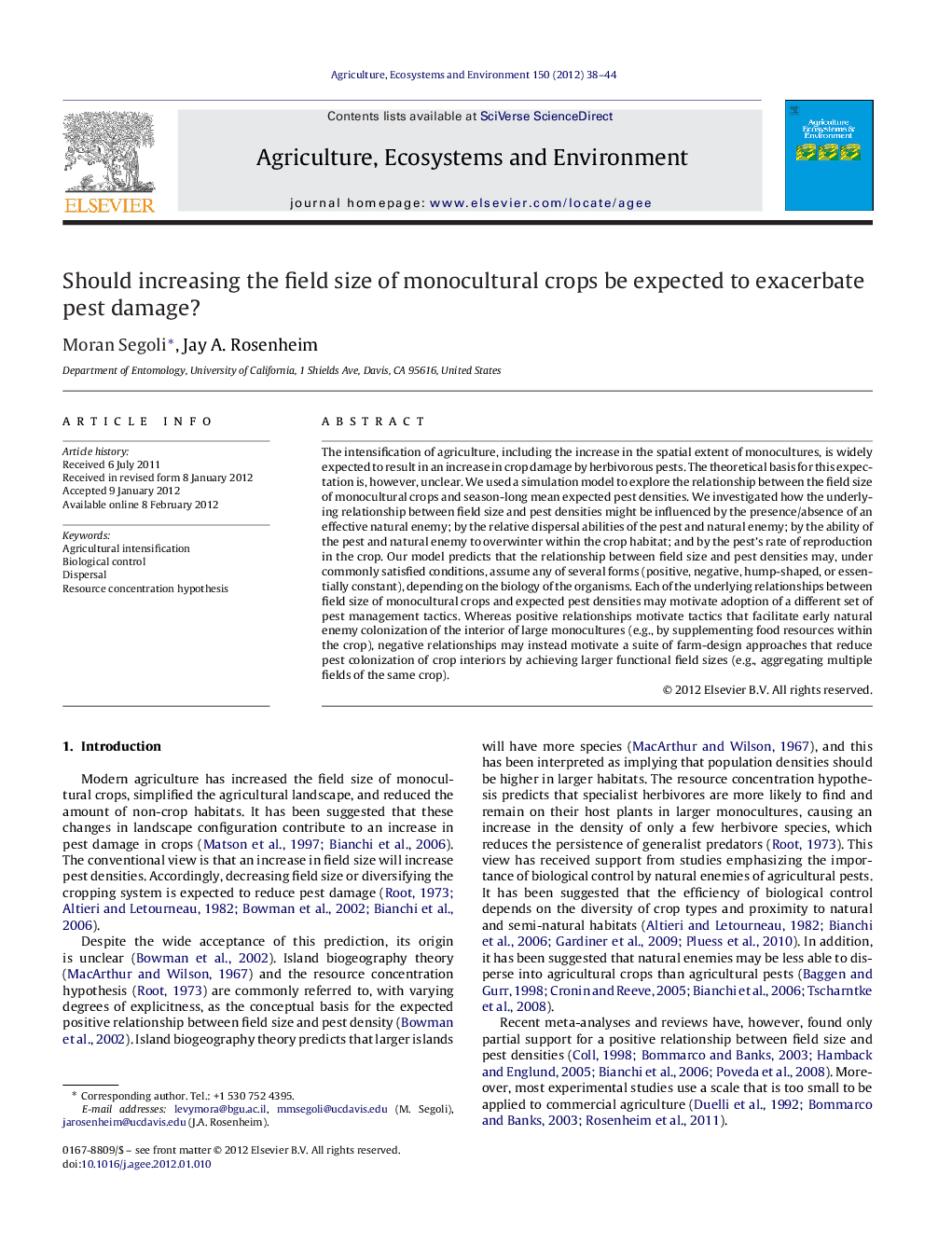| کد مقاله | کد نشریه | سال انتشار | مقاله انگلیسی | نسخه تمام متن |
|---|---|---|---|---|
| 2414517 | 1552102 | 2012 | 7 صفحه PDF | دانلود رایگان |

The intensification of agriculture, including the increase in the spatial extent of monocultures, is widely expected to result in an increase in crop damage by herbivorous pests. The theoretical basis for this expectation is, however, unclear. We used a simulation model to explore the relationship between the field size of monocultural crops and season-long mean expected pest densities. We investigated how the underlying relationship between field size and pest densities might be influenced by the presence/absence of an effective natural enemy; by the relative dispersal abilities of the pest and natural enemy; by the ability of the pest and natural enemy to overwinter within the crop habitat; and by the pest's rate of reproduction in the crop. Our model predicts that the relationship between field size and pest densities may, under commonly satisfied conditions, assume any of several forms (positive, negative, hump-shaped, or essentially constant), depending on the biology of the organisms. Each of the underlying relationships between field size of monocultural crops and expected pest densities may motivate adoption of a different set of pest management tactics. Whereas positive relationships motivate tactics that facilitate early natural enemy colonization of the interior of large monocultures (e.g., by supplementing food resources within the crop), negative relationships may instead motivate a suite of farm-design approaches that reduce pest colonization of crop interiors by achieving larger functional field sizes (e.g., aggregating multiple fields of the same crop).
The variety of predicted relationships (left) between field size of a monocultural crop and pest densities, that depend on the dispersal abilities, reproductive rate, and overwintering of pests and their natural enemies. Predicted pest densities at different locations within a monocultural crop field demonstrating a scenario where pests are concentrated in the edge of the field (top right) and a scenario that pests are able to disperse into the center of the field (bottom right).Figure optionsDownload as PowerPoint slideHighlights
► Increasing monocultural field size is widely considered to exacerbate pest problems.
► Our model predicts a variety of relationships between field size and pest densities.
► In some cases, pests can be managed by facilitating predator establishment.
► In other cases, pests can be managed by clustering fields of the same crop.
Journal: Agriculture, Ecosystems & Environment - Volume 150, 15 March 2012, Pages 38–44